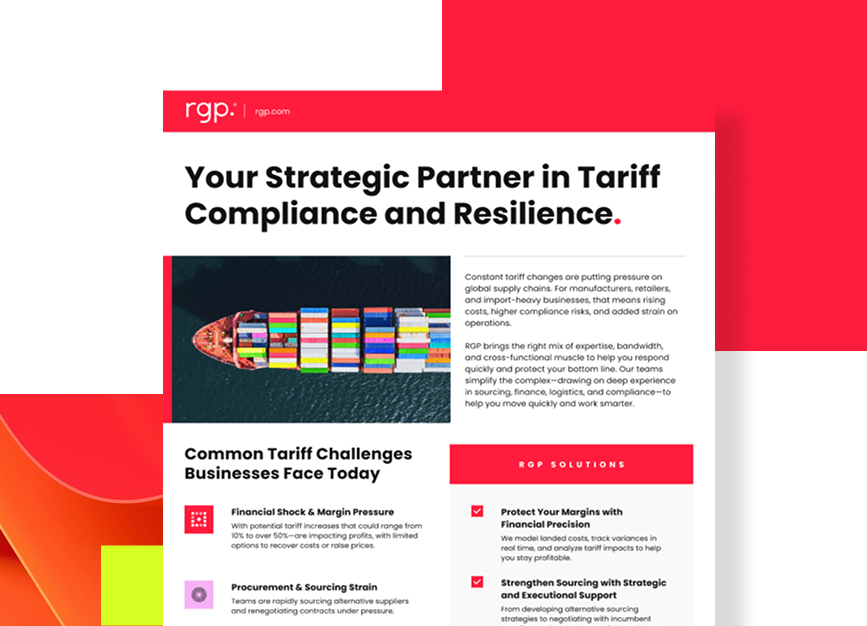Tariff disruptions are reshaping global trade and putting new pressure on sourcing, pricing, and margins. See how RGP can help turn disruption into action and why now is the time to get ahead.
Download Our Whitepaper Covering the Tariff Implications & Economic Impact
Meet Your Strategic Partner in Tariff Compliance and Resilience
Trade disruption isn’t slowing down—it’s just getting more complicated. For manufacturers, retailers, and import-heavy businesses, shifting tariffs are pushing up costs and straining every part of the operation. Whether you’re recalibrating sourcing, navigating compliance, or trying to align teams around a smarter response, RGP can help you turn pressure into power.
Navigate Complexity Confidently
The trade environment is constantly changing, and tariff shifts can impact margins, sourcing, and compliance all at once. While things are in flux, we’re here to help you stay ahead. Let us help you navigate these changes, untangle the complexities, and make informed decisions that keep your operations on track.
- Import/Export Cost Accounting and Tariff Classification
- Landed Cost Modeling and Financial Impact Analysis
- Real-Time Reporting and Variance Tracking
Keep A Handle on Headcount
When your internal teams are stretched thin, scaling smart matters more than scaling big. We give you the talent and leadership support you need to manage day-to-day needs, drive key projects forward, and stay ready for what’s next.
- On-Demand Talent for Transactional Lift
- Project-Based Help with Compliance, Forecasting, and Reporting
- Interim Leadership that Connects Strategy to Execution
Champion Cross-Functional Teams
Tariff response isn’t a one-team job. We bring the right minds together across your organization so strategy isn’t siloed, decisions get made faster, and disruption doesn’t slow you down—or snowball into something bigger.
- Integrated Cross-Functional Support Under One Roof
- Custom Sourcing and Financial Models to Soften Impacts
- Supply Chain Redesign and Risk Mitigation Planning
Tariff Trouble? Let’s Talk.
Disruption hits every organization differently. We’ll help you focus on where to act first and how to move forward with confidence. Download our one-sheeter or connect with our experts to learn more.
